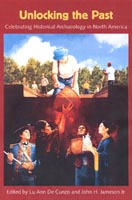Part 4: Making a Living in Rural America: The Archaeology of Work

Have you ever traveled down the highway and seen abandoned farmhouses, mills,
fences, or fields? Have you wondered who lived there and worked there, and
what happened to them? Archaeologists view every agricultural and industrial
site as unique: we want to discover what these past builders and producers
learned and whether this technology still has value. By piecing together the
fragments of artifacts we dig up with information from historical documents,
building and landscape remains, and oral histories, we can open a window into
the everyday lives of rural Americans.
Over the years, we have learned to apply archaeological methods to study industrial
features as large as canals and as small as the privy pits in the canal-diggers’
backyards. We can only understand the ‘big picture’ by linking
workers and their daily lives to the technological and engineering developments
that guided their work, and to the things they made. Working with historians
of technology and social historians, we’re learning about the Industrial
Revolution as a process of change. The process followed different courses
in different places at different times, influenced by a complex array of environmental,
political, and economic forces, and by the cultural experiences and practices
of the local people.
Projects in the Book
(Click on bold link to view an excerpt)- The Archaeology of Agricultural Life - Sara Mascia
- The Archaeology of Rural Industry - David R. Starbuck
- Sidebar 8: Farmstead Archaeology in the Arkansas Ozarks - Leslie Stewart-Abernathy
- Sidebar 9: Archaeology on Western Ranches - Margaret Purser
- Sidebar 10: Feminist Archaeology at a Dakota Village - Sarah McDowell
- Sidebar 11: Tenant Farmers in Delaware - Lu Ann De Cunzo
